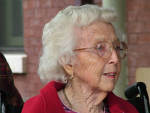How Osteoarthritis Effects the Hip and Knee
Published by Steve Hedberg on March 20, 2012 Under arthritis
 Arthritis, which describes more than a hundred different diseases related to the joints, can affect the body in many ways and is a very complex disease. While arthritis can affect not only joints, but also organs, tissue, and other parts of the body, the most common symptom is related to degradation of the bodies joints.
Arthritis, which describes more than a hundred different diseases related to the joints, can affect the body in many ways and is a very complex disease. While arthritis can affect not only joints, but also organs, tissue, and other parts of the body, the most common symptom is related to degradation of the bodies joints.
Osteoarthritis is one of the more common types of senior arthritis, which often result in significantly reduced mobility and the use of home medical tools, like recliner lifts. A big part of how osteoarthritis affects the body is related to which joint is affected by the disease.
Osteoarthritis, sometimes referred to as osteoarthrosis, in many cases, results in bone spurs that are caused by bones in an affected joint rubbing directly against each other. Over time, cartilage in these joints is lost, resulting in bones of the joint coming into contact. This can cause small fractures in the joint and as these fractures heal, the bone can become deformed.
For simplicity’s sake, the ball and socket joint type, which is found in the hips and shoulder is often used to describe how a joint works. However, there are several different types of joints, which have an impact on how osteoarthritis develops. To understand how osteoarthritis affects these joints, it is important to understand how the joints work.
Functionality of the Hip Joint
Unlike many other joints in the body, under normal circumstances, the range of movement of the hip is rather small, typically around 40 degrees. Factors such as body weight and rate of motion play a role in how much force is applied to the hips.
While walking, there are two main parts, the stance and swing phase. During the stance phase, which compromises approximately 60% of our walking cycle, the foot is in contact with the ground, moving from heel, to flat foot, and finally to the toe pushing off of the ground. As the swing phase begins, the leg moves forward, then the stance phase begins again with heel contact.
During typical walking patterns, there is a short period where both feet are on the ground. This time period decreases as the rate of walking increases, with no double support being present when running. Due to the way the bones moves within the socket, not all areas of cartilage make contact with joints, which can result in these areas not receiving enough nutrition from mucopolysaccharide ground substance, while areas in consistent contact with the joint actually are less likely to develop arthritis. This observation seems to backup the idea that safe and regular movement of a joint is important for developing arthritis.
Functionality of the Knee Joint
Unlike the hip, which only has approximately 40 degrees of movement, the knee has a much higher range of motion, almost 140 degrees, although during walking, the average range of motion is closer to 70 degrees. It is also a much more complicated joint, which is thought to be one of the reasons that osteoarthritis of the knee is more common.
The knee is an essential part of the walking cycle and movement typically begins just prior to the toe pushing off from the ground, continuing into the forward gate cycle. As is the case with the hip, leg muscles and tendons are essential for movement of this joint, with a reactionary force that is comparable to up to 700% of body weight.
Knee osteoarthritis will most often develop at the joints of highest stress in the knee, which support the majority of the weight bearing load on the knee. Damage to the knee joint most often occurs during high impact sports, which involve higher than normal force on the joint, as well as increased flexion. This can put more stress on areas of the joint that do not normally make contact with bones, which are at an increase risk of damage.
No Comments |